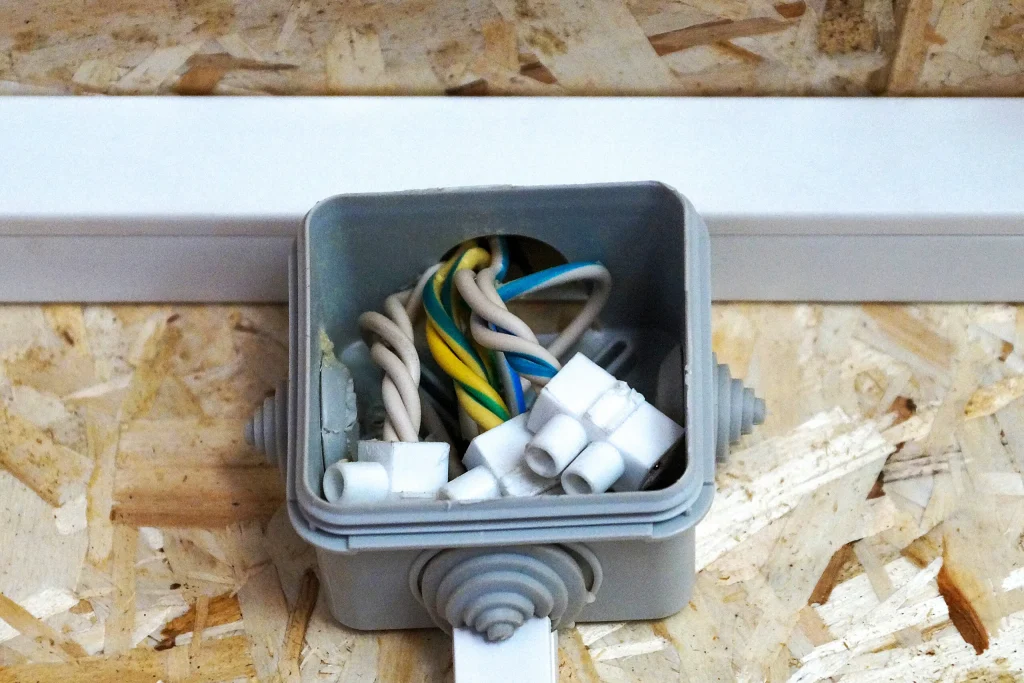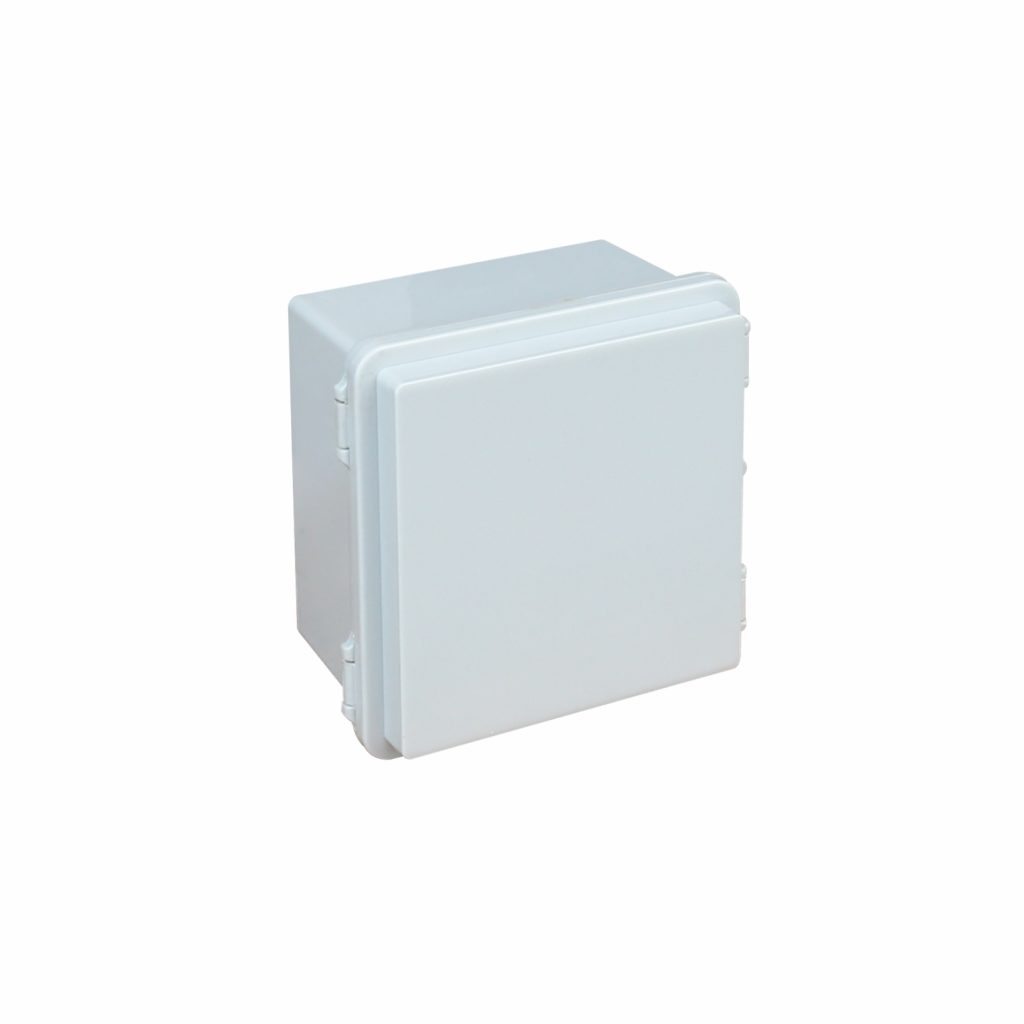How to connect two wires in a junction box?
Table of Contents
ToggleJunction boxes are plastic or metal boxes that are used in houses or apartments for connecting wires. The connection within the box is known as a branch circuit and usually signifies the end of a cable run. A junction box needs the wire easy to access as all wires are connected in the building. You just have to remove the covering of the junction box for repair or for additional wires to add. Junction boxes also prevent the wire from damage due to rain or any other environmental damage. This box also protected wires from illegal tampering.
Some of the basics of junction box wiring
Usually, a junction box in a house or a factory is used to connect single power to multiple outlets. For instance, a junction box may contain one wire power source that is connected to multiple power sources. They are generally made up of hard metal or plastic and usually sizes between two and a half to 3 ½ inches long.
The material of a junction box depends on whether your junction box is supposed to support any weight. Like metal junction boxes can support light fixtures on the other hand plastic junction boxes cannot support this weight. Another additional benefit of using a plastic junction box is that they can easily be installed than metal ones. However, a junction box is made to just cover wire splices be it metal or plastic.
Why must splices be in junction boxes?
All wire splices should be enclosed within a junction box in a house or a building to meet the electric code. But sometimes wire splices are missed and that causes fire hazards. Any wire, which is exposed to the environment, can be dangerous. Especially wire splices that are bared are prone to accidents because they can be tripped over, distort or expel sparks that can be hazardous for both children and pets. Junction boxes can be a good alternative to ignore a hazard. They are helpful for wire slices because they also allow the professionals to locate the wire splice area.
How to join the wire to the junction box?

The junction box is used to create all wire connections in the home called splice. The junction box is often attached to an electrical outlet. By making splices in a junction box the risk of electrical accidents occurring from connecting wires coming in contact with flammable articles diminishes considerably.
Once a new junction box is connected to the ceiling, other walls are ready to be connected to the wires.
- To attach a new junction box in your house, first, turn off the main power circuit breaker box of your home where you are going to install a new junction box.
- Before attaching the main junction box, check with a plugging circuit tester into an electrical outlet of a room and connect the same circuit to ensure that the power is correctly off before attempting to add more wires to your home.
- Then take a screwdriver and a hammer to knock out the hole in a wall where you want to install a junction box to insert a cable.
- Try to insert the wire through the whole of a cable on an electrical box of the outlet. You can also try to push it to the wall towards the junction box. You can pick whichever technique to insert the wire in the junction box. On the junction box, use a fishtail to pull the end of a cable through the cable clamp.
- Try to pull up the electrical cables as much as six inches out from the electronic box junction box. Finally, cut the excess wire with the help of a wire cutter.
- Inject another length of electrical cable from junction box to electrical outlet. Run the end of the electrical cable true cable clamp on a junction box and route the cable through the wall outlet. Again, with the help of fish tape pull the end of the cable into the electrical box. Try to leave a 6 inches electrical cable on both ends of the box and cut the rest with the help of wire cutters.
- Now cut 3 inches from the outer insulating jacket of the electrical cable with the help of a utility knife to reveal the color code combination of insulated wires within it.
- Then the color code is separated with the help of wire strippers. Make sure you strike 3/8 inches of the insulating jacket.
- Grip the end of the white wire to the new fixture of white wire in the junction box. To make it even, try to trim the excess wire with the help of wire cutters. Now twist the wire clockwise and screw on the wire nut. Make sure it is covering the ends of bare metal. In the same way, connect the green and black wire to the new junction boxes wires respectively.
- Connect all the wires on the same day with the wire nuts. If the wires are going to join electrical outlets with a terminal screw then turn the black wire anticlockwise around the brass color terminal screw and tighten the screw with the screwdriver. In the same way, the white wire goes anticlockwise around the silver-colored terminal screw and tightens the screw with a screwdriver.
- Finally, push down the junction box cover onto the junction box and screw them. Tighten the screw with a screwdriver to secure the junction box cover.
Conclusion
We know that electricity and water are opposite to each other. It is important to cover all our main circuits with weatherproofing junction boxes to prevent electrical accidents. This junction box protects our electrical appliances from being damaged by lightning, electrical short circuit, fire, or any other natural calamity. Therefore, it is advised to cover your main circuit with a junction box.
Tel: +86-577-88671000
E-mail: ceo@tosun.com
Skype: tosunelectric
Wechat: +86-139 6881 9286
WhatsApp: +86-139 0587 7291
Address: Room No.1001 Wenzhou Fortune Center,Station Road, Wenzhou, China
REQUEST A QUOTE
WhatsApp us
 : +86-139 0587 7291
: +86-139 0587 7291 English
English Español
Español Русский
Русский Français
Français العربية
العربية Português do Brasil
Português do Brasil Українська
Українська Türkçe
Türkçe Polski
Polski Nederlands
Nederlands Italiano
Italiano Bahasa Indonesia
Bahasa Indonesia हिन्दी
हिन्दी اردو
اردو አማርኛ
አማርኛ Հայերեն
Հայերեն ไทย
ไทย Монгол
Монгол فارسی
فارسی Shqip
Shqip Ελληνικά
Ελληνικά



